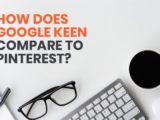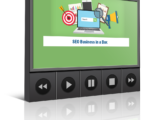
Marketing for Survival: Donald Miller’s 2 Tips to Make Customers Buy
November 9, 2020There’s a funny thing that happens when I see a really, really good ad for a product. I’m talking about the kind of ad that perfectly hits on my problem and gets to the “solution” immediately.
I buy it.
It doesn’t matter what it is, and it only sort of matters how much it costs. If an Instagram ad or a promotional email finds just the right connection to what I’m going through right now, I’m leaping for my wallet and typing in my card info as quickly as my fingers can move.
I like to call this reaction the result of my “lizard brain”: it’s the part of my brain that thinks I’m still fighting for every scrap of food and sees an upcoming presentation as an actual life or death situation. It’s the subconscious thought processes that drive my actions without me realizing it.
This is why, even though I work in marketing (and in fact, my company even wrote the book on marketing) and I know all the tricks that these marketers are using, I still “fall for it.”
My brain is convinced that I need this new tea, or that fancy weighted blanket. It won’t just make me feel better, but it will actually make things better. At least that’s what my “lizard brain” tells me.
I know I’m not the only one this happens to, because otherwise no company would ever make any money.
And when we brought in Donald Miller for the recent workshop on his StoryBrand method, he said the same thing. Donald talked a lot about how the underlying mechanics of the brain navigate today’s constant flood of information, and particularly how the brain decides what’s important, and what’s not.
And guess what? Your brain does see certain products and services as “needs” based on how the messaging is framed.
It all ties back to the two things that are always going on in the human brain—mine, yours, your customers’, everyone’s.
Survive and ThriveConserve CaloriesWe’ll get into what each of these means, but the important thing to remember through all of this is that your job as a marketer is to make sure that your messaging immediately and consistently connects with these ideas. This is the only way you will ever see success as a business.
So we will break down these two main functions of the brain, and then give you a few tips on how to connect them to your marketing.
Survive and ThriveYour brain’s number one goal is to keep you alive. Seems obvious, but it’s more subtle than you may think.
The main way your brain protects itself (and by extension, you) is by deciding what information you need, both in the moment, and in the long term.
See, your brain can only prioritize so many things at once, so if your “lizard brain” deems a piece of information unnecessary or even counter to your survival and wellbeing, there is no way you’re going to retain it.
This is why I personally don’t remember anything from my trigonometry class, but I do know how to get to the nearest target from anywhere in town. Trig has done very little to make my survival better, but prowling the home décor aisle has saved me from several emotional breakdowns. And if that’s not survival, I don’t know what is.
If your brain didn’t have this mechanism, you would get so distracted paying attention to everything with equal weight, you wouldn’t be able to function as a human being. You’d never make it to work in the morning because you were researching the region your coffee was grown in.
So when there is information that your brain deems unnecessary to survival, such as the topography of Ethiopia, your brain ignores it and you move on with your day, drinking your coffee and driving to work in a pleasant haze.
The same goes for marketing. You scroll past way more ads than you stop to look at, because your brain doesn’t see that information as important to your survival. Until you hit that one ad that does.
 Marketing for Survival
Marketing for Survival
So how do you, a marketer, work with this idea?
You have to connect your product or service to the survival of your customer.
Let me say that again. The key to growing our business is that you must associate your products and services with the survival of your potential customers, or their brains are designed to ignore you.
If the main task of their brain is to keep them alive, and if you aren’t saying your product contributes to that, your customer won’t even remember scrolling past your message.
This happens quickly. Donald Miller says you have 8 seconds.
If you can’t make that connection between your product and your customer’s survival in 8 seconds, they will start to zone out, start to daydream, and you will never make that sale.
But wait. I can hear the questions already. You’re saying “but my product doesn’t help people survive. I don’t sell safety vests or self defense training.”
Luckily, you’re wrong. If you have sold anything, you help your customer survive. You just don’t know how that connection is made.
So that’s your first task. You have to find that connection. And the best way to figure it out is to change your definition of “survival”.
Maslow’s Hierarchy of NeedsEnter Maslow’s Hierarchy of Needs: a psychology theory that breaks down all fundamental human needs and ranks them by importance.

The needs that are the most basic, the most central in the brains of your customers, are at the bottom. Once those basic needs are met, then they move up the pyramid and seek out more. But the important thing to remember is that all of these needs are important for their survival and prosperity.
Food and shelter are easy to connect to. Do you sell food? Do you sell homes or security systems? Done and done.
Once you get to the higher levels, though, things become a little more complicated. The underlying motivation is still survival, but the connection may be less obvious until you think a little harder.
Getting a better job means more money, which means better survival. Getting a nice new car means a higher social status, which means better survival. Joining an online community means more friends and connections, which, you guessed it, means better survival.
Ideally, most people have their very basic needs met. So for most businesses, you will need to find a way to connect your product or service to one of these higher level human needs.
And then you get to step 2. You need to make that connection front and center in your messaging, because the second fundamental function of the brain is just as ready to ignore you as the first.
Conserve CaloriesThe second thing your customers’ brains are always trying to do is conserve calories. And no, it’s not because your subconscious is concerned with looking fit in a bathing suit on a beach somewhere.
Your brain alone uses 600–800 calories every day just by thinking and processing. And the more you ask your brain to do, the more energy it needs and calories it burns.
This is why a long day of learning, strategizing, or writing an important piece of content makes you so tired. You may have been sitting down, but you were exercising.
But all of those calories your brain is using to think? Well your muscles would really need them if you suddenly had to run from a lion. And our subconscious brains are very concerned with surprise lion attacks.
So if you are using too much mental energy thinking about things that are really not that important (remember the connection to survival we just talked about?), you are wasting calories that your body needs to survive. Your brain solves that problem by drifting off, stopping paying attention, and putting you into daydreaming mode.
Daydreaming or zoning out are survival mechanisms. It’s your brains way of saving energy, because the less energy you expend on things that don’t matter, the more you have saved up to, say, run for your life.
This may sound like a great excuse for missing information in a team meeting, but in reality it’s a call to action for you marketers.
Put Your Marketing on a DietYou need to make your marketing way more concise.
That’s the simple truth. When you write long, rambling email copy or it takes you three paragraphs to say what you do on your business homepage, you are sending your readers off into daydream land.
And when your customers daydream, they sure as heck aren’t daydreaming about buying your product.
So you need to cut the fluff and make your messaging as quick and easy to understand as possible. Remember those 8 seconds? That matters here too.
Your connection to the survival of your customers should be emphasized as early as possible in your messaging and in as few words as possible, so your audience doesn’t need to burn any excess calories trying to figure it out.
Every extra word or unnecessary comma is an extra calorie burnt and brings you one step closer to losing them.
This is why short, concise, and clear messages will always get more followers than a long, drawn out, and boring message.
So make sure you only have the bare minimum necessary to get the point across.
 Final Overview and 3 Bonus Tips
Final Overview and 3 Bonus Tips
If you think back on the marketing that has stirred the most action in you, you’ll probably realize that it did just the thing Donald Miller talks about. They connected their product or service to your survival, and they made the point before your brain stopped paying attention.
And while that sounds really simple in theory, it can be way harder to execute in your own business. So we pulled a few other tips from Donald’s workshop that might help you along (and if you want to whole breakdown on this process and more, you can find the workshop here).
Create a business one-liner and use it everywhere. This would be a specific line of messaging used across the board in all of your marketing that hits on all the points we talked about above.Use story elements to keep your audience better engaged. The human brain connects astoundingly to narrative, so integrating some sort of story into your marketing can help keep your audience’s attention. And if this sounds familiar, it’s because this is the entire foundation for Donald Miller’s StoryBrand method.Write your marketing messaging, and then cut it in half. We all like to think our words are important, but most of the time, you can say the same thing in half the space. So break out the red pen and get to hacking and slashing. Your customers will thank you.The sooner you get your messaging to work with your customers’ core thought processes, the better your marketing will be.
And if you can get it right, your customers will be the ones saying “I need this right now to make my life better.”

The post Marketing for Survival: Donald Miller’s 2 Tips to Make Customers Buy appeared first on DigitalMarketer.
Read more: digitalmarketer.com
A quick note about the reviews I do on this site. The product vendors may give me access to their products for free in order for me to do my review, alternatively, I may have bought the product myself. However I make no promises to vendors regarding what I write in my review. Should you click a link that takes you to a sales page for a paid product for sale this link will be an affiliate link and I will be paid a percentage of the sales price should you decide to invest in it.




